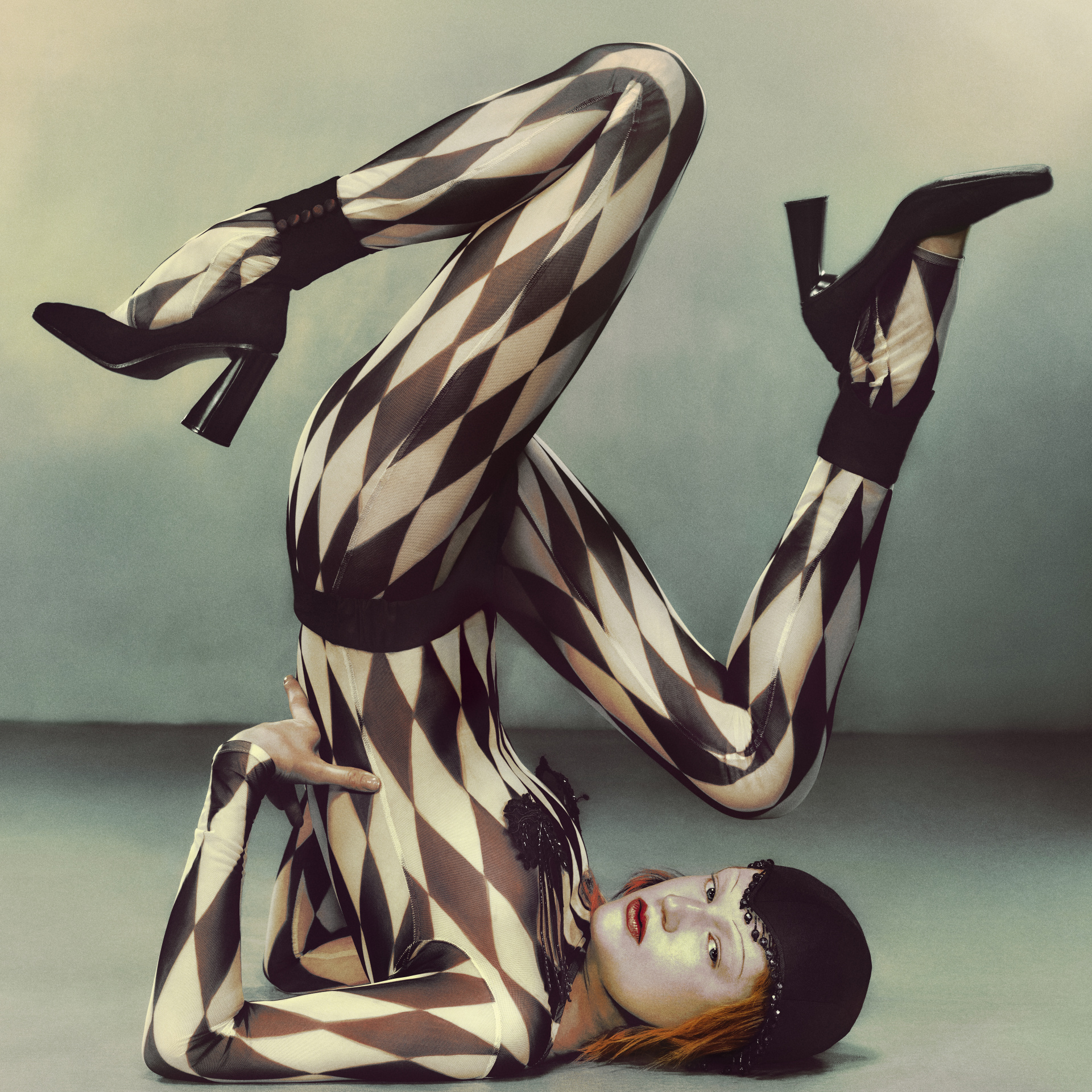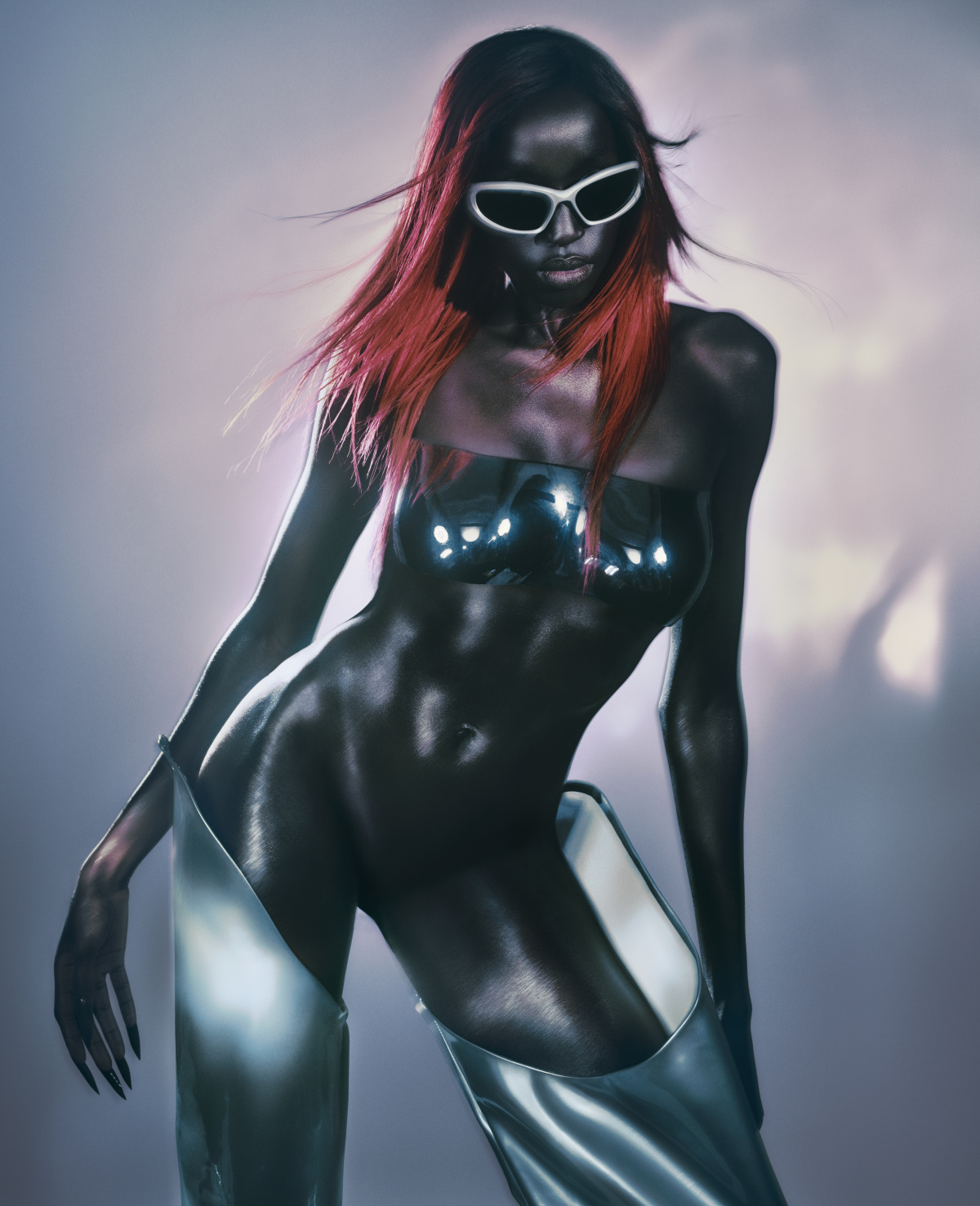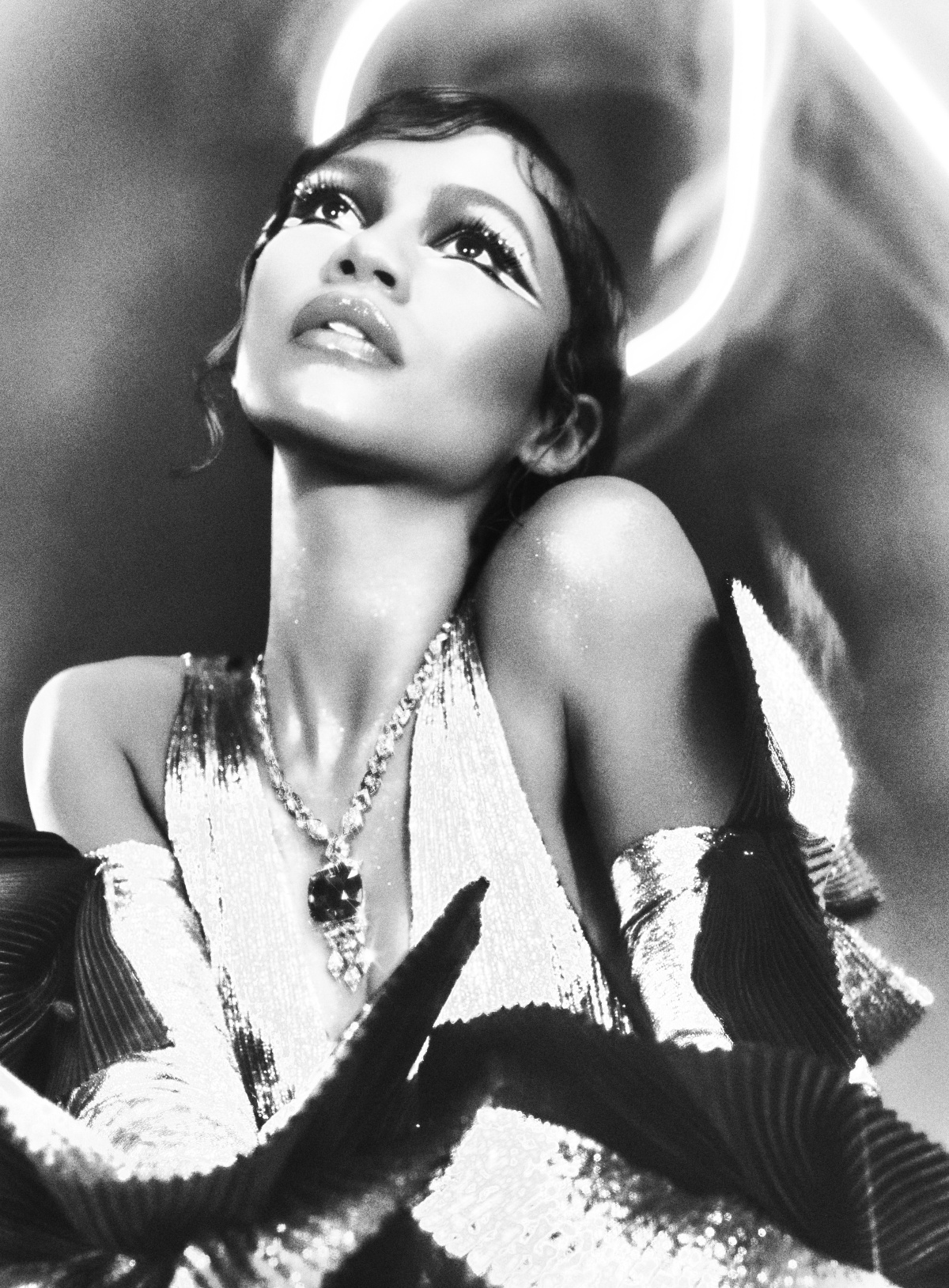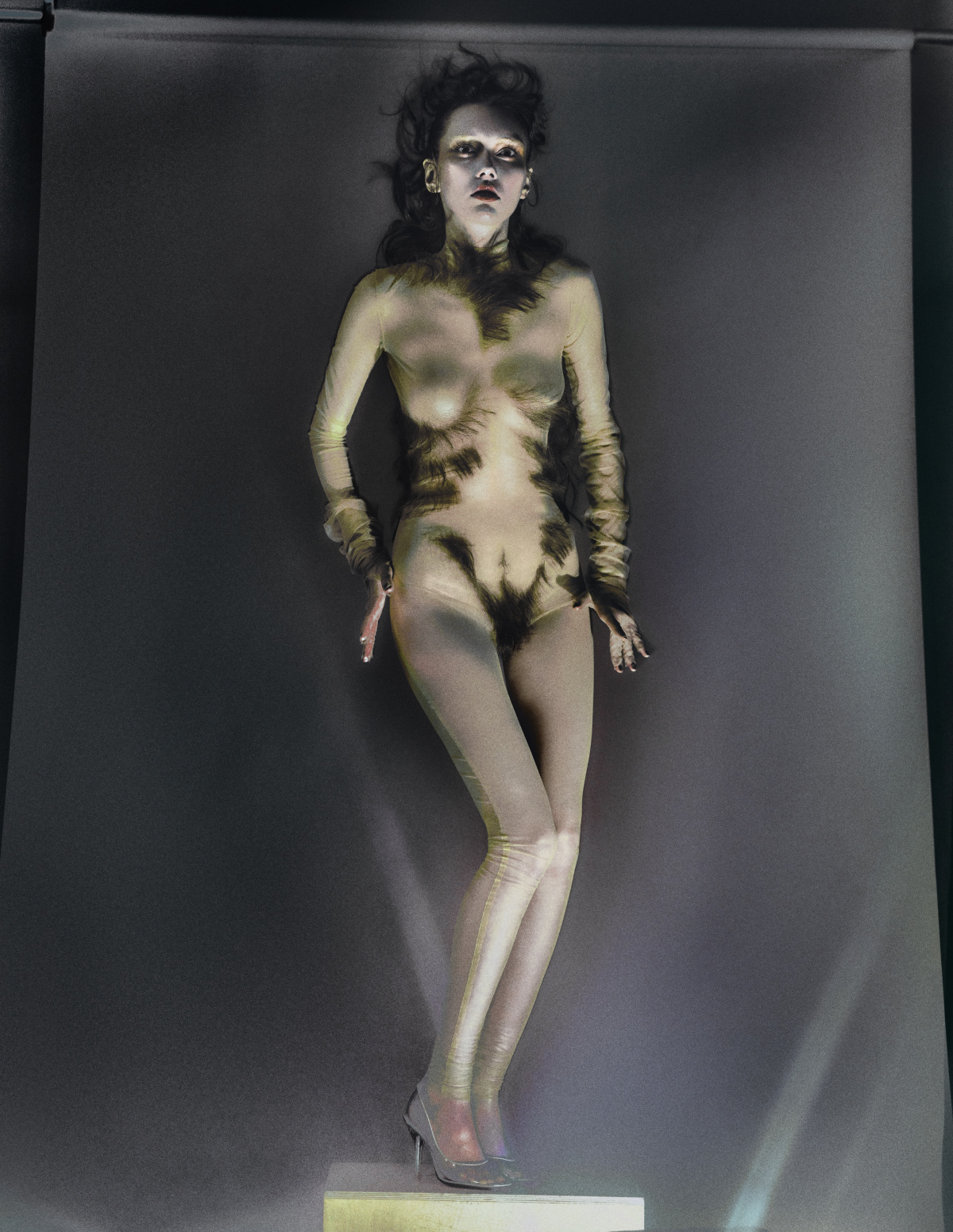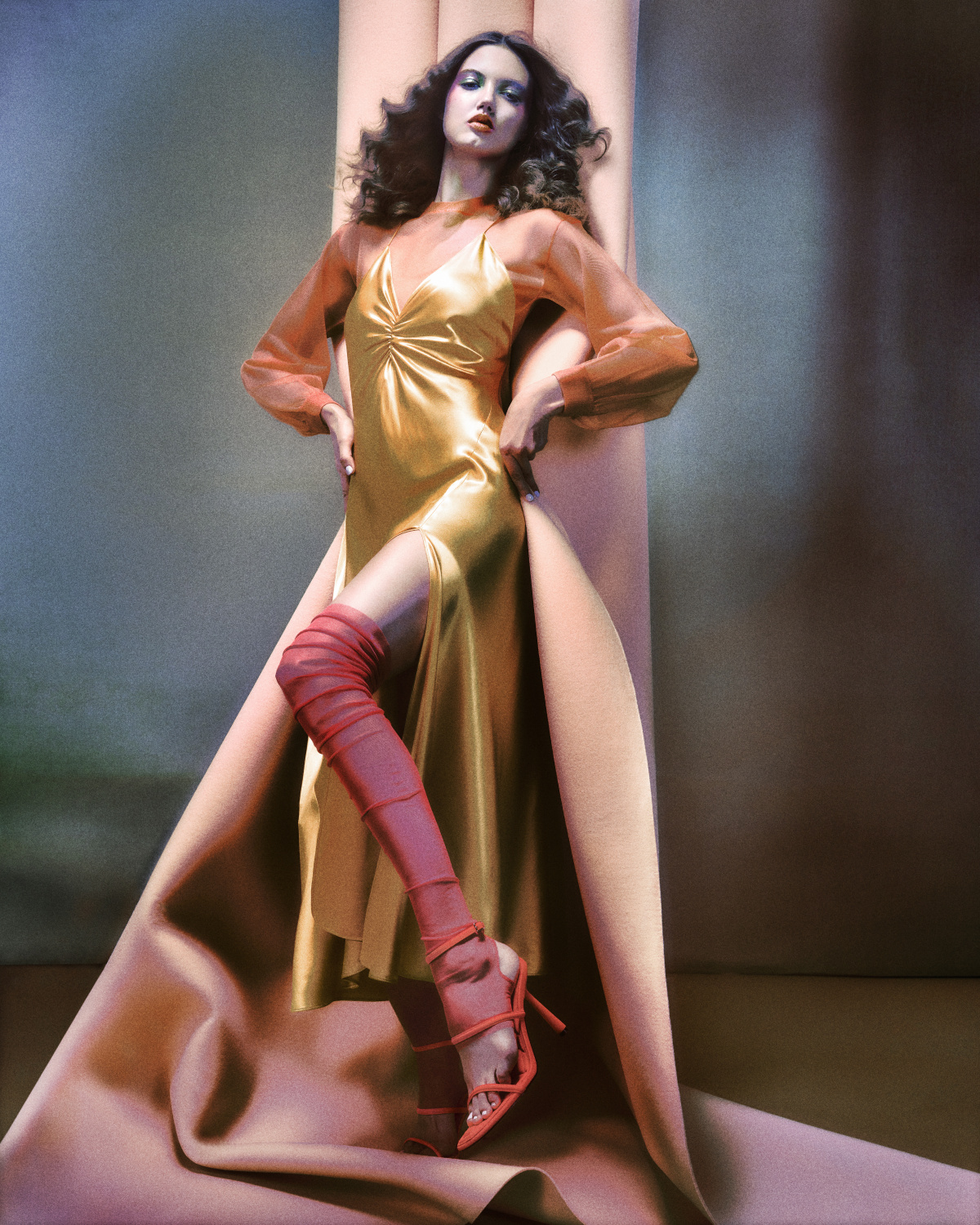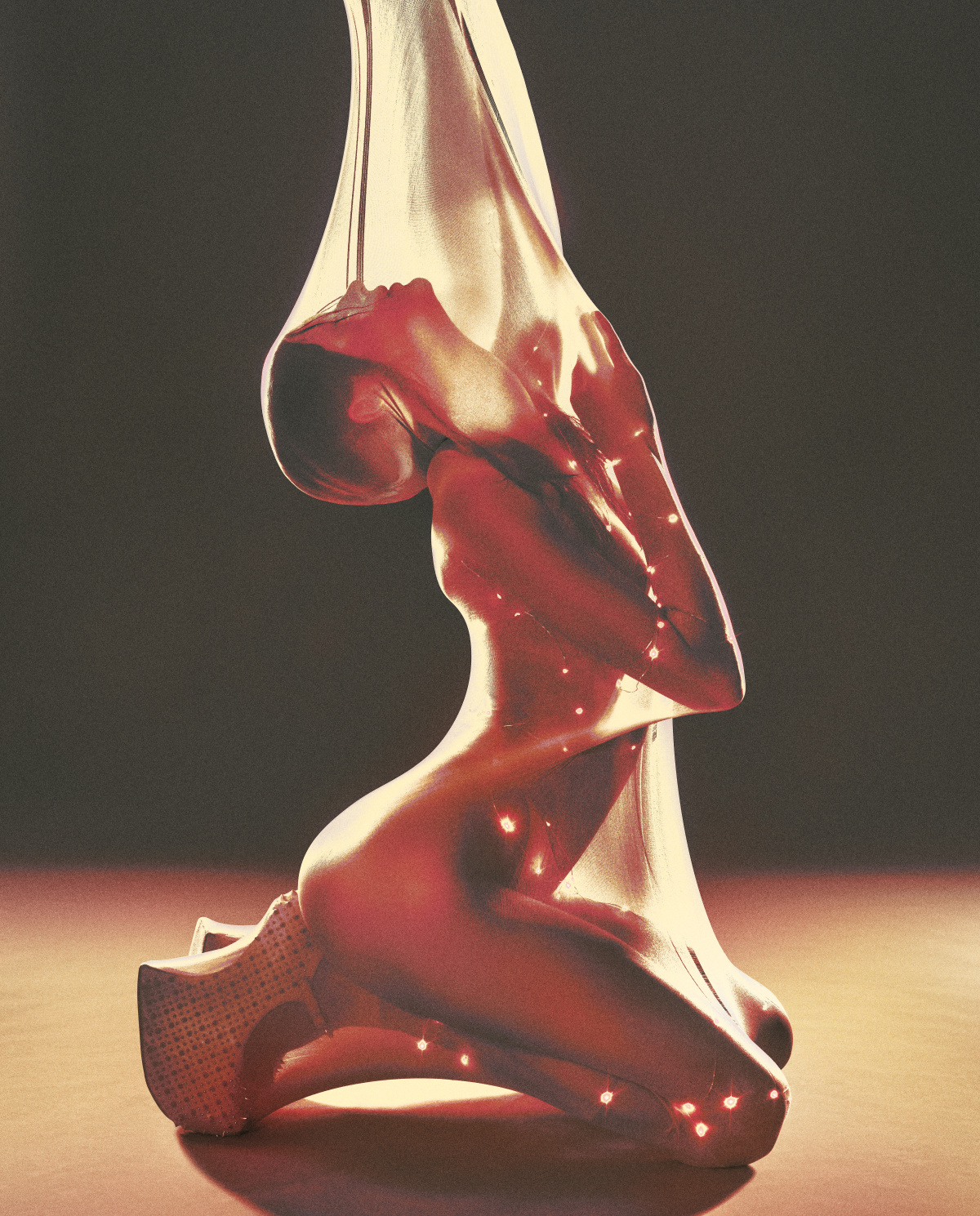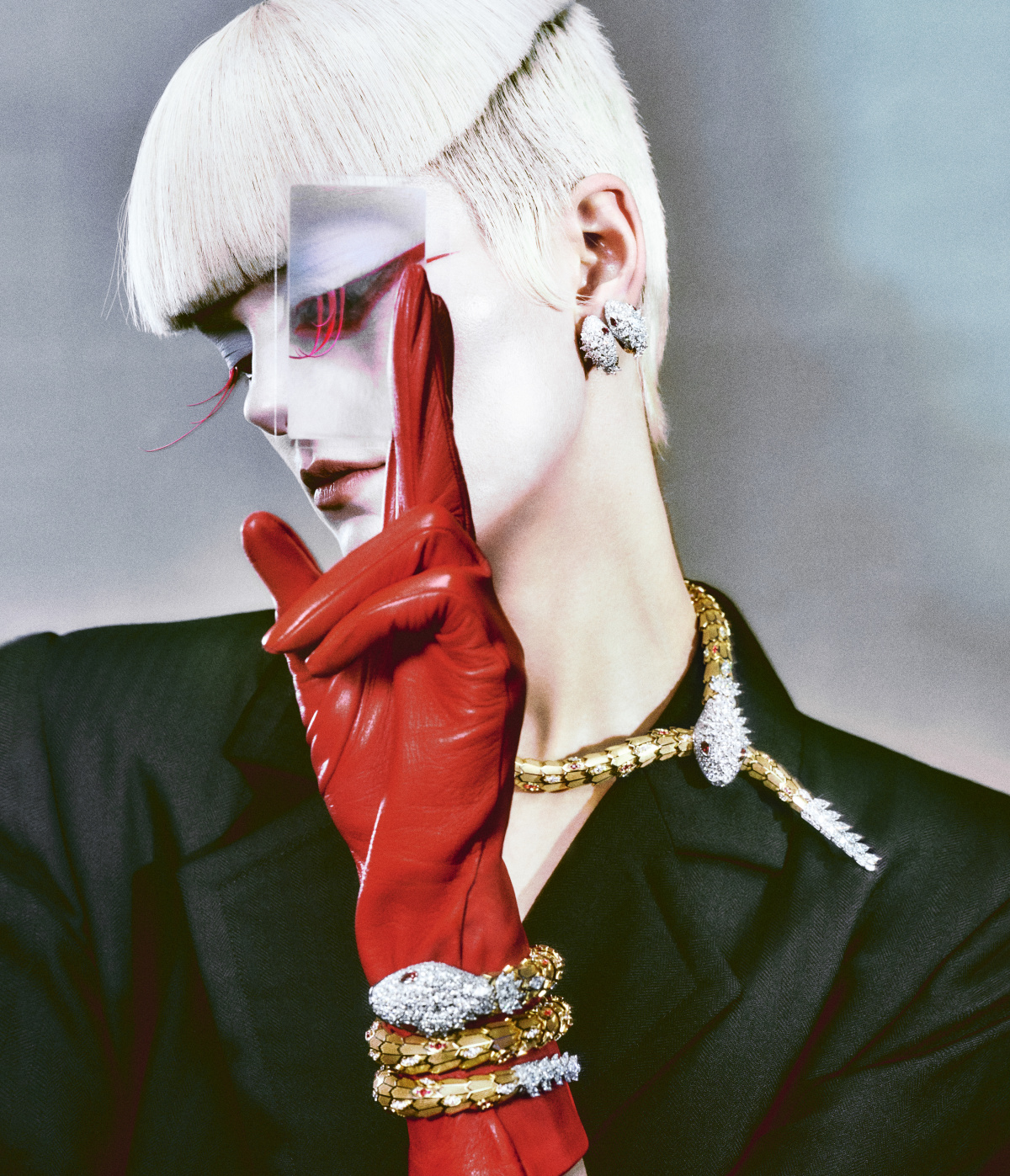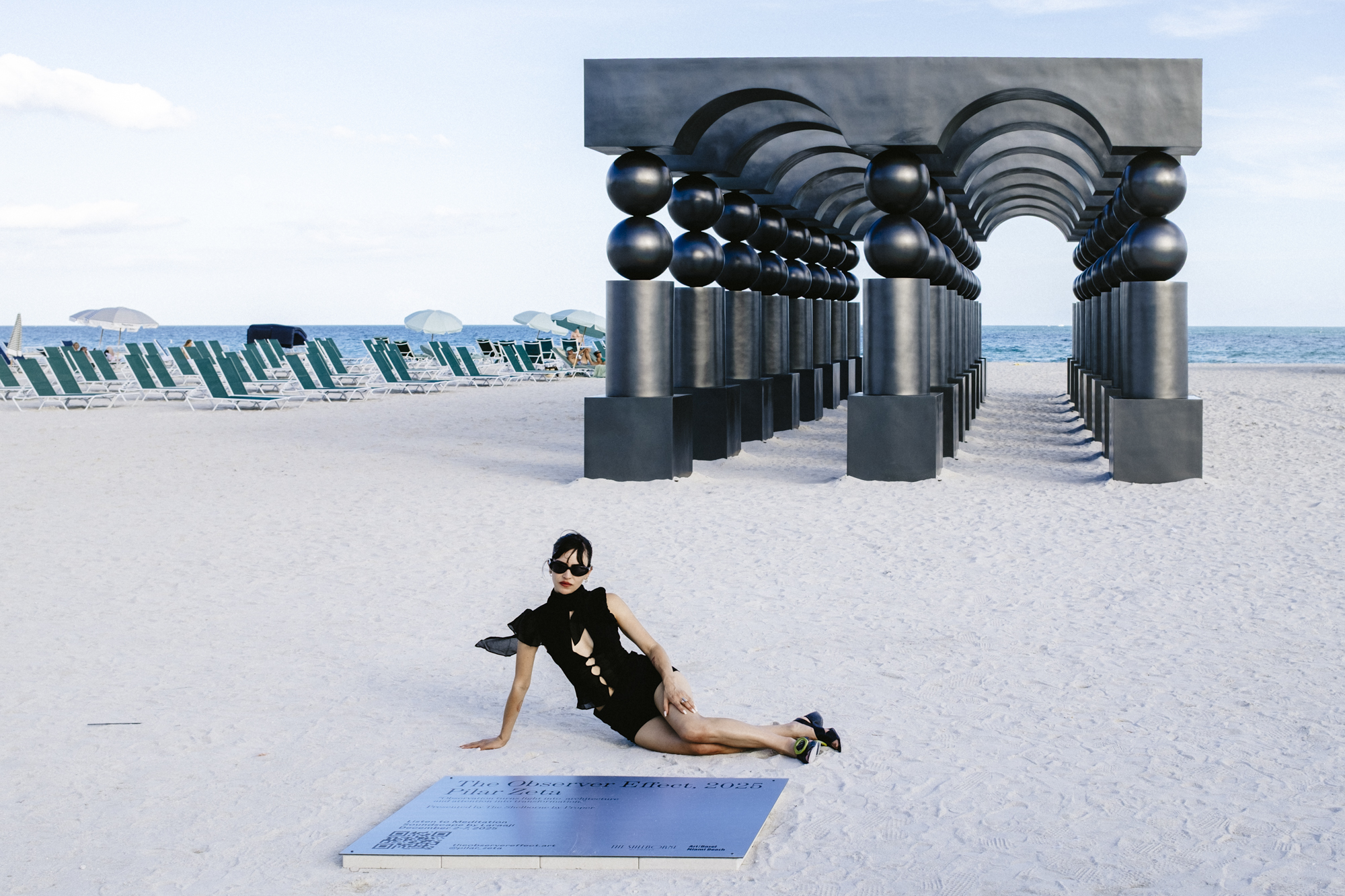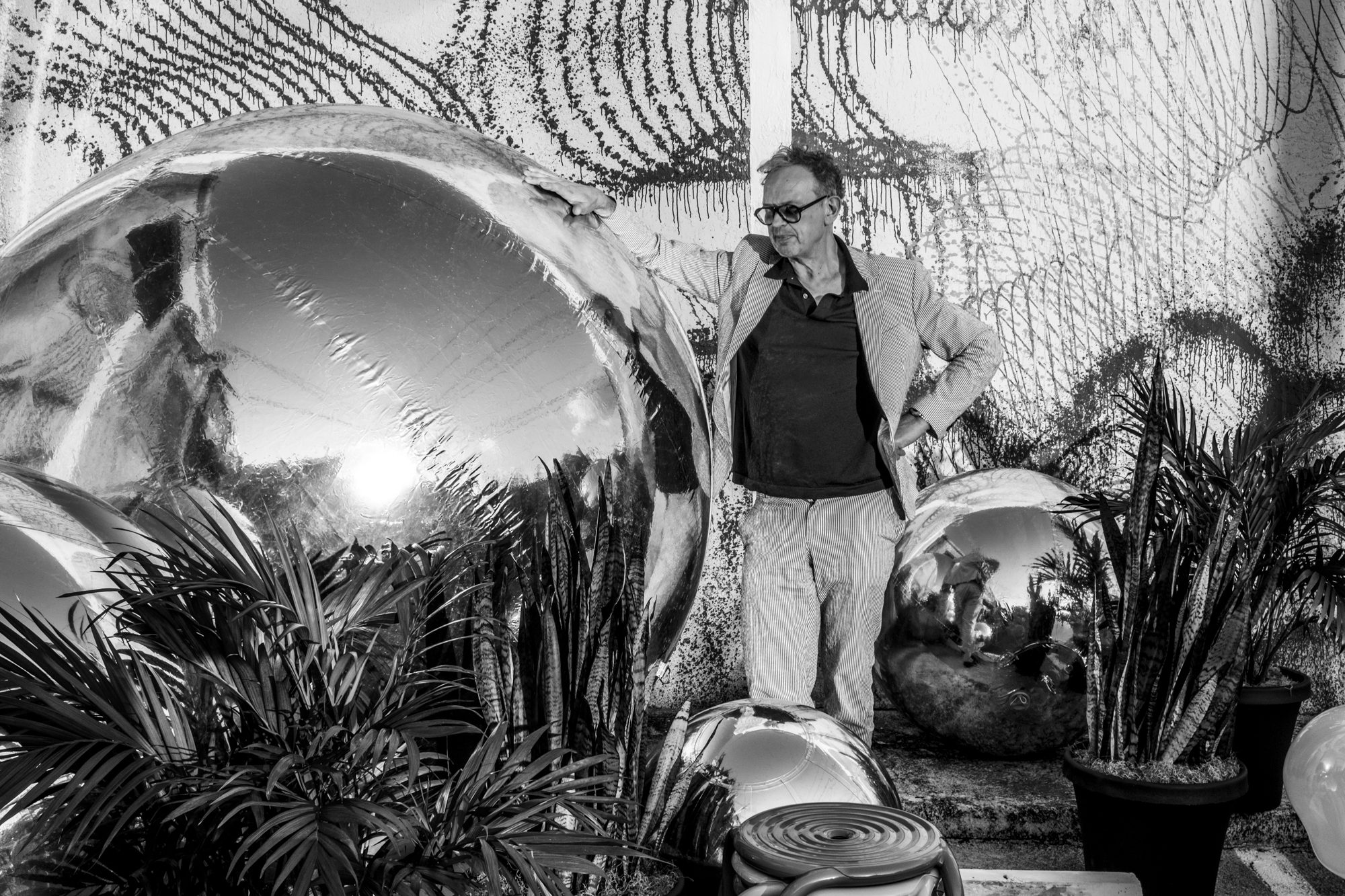Elizaveta Porodina’s life has been defined by movement—across borders, between professions, and within her own mind. An artist known for her dreamlike, cinematic photography, Elizaveta’s journey began far from the glamour of the art world, in the heart of 1990s Moscow, during a time of political upheaval. Today her work is ubiquitous across the covers of fashion magazines, ad campaigns, and museum walls, but the path to artistic recognition was anything but straightforward.
Raised by a mother with a deep appreciation for the arts, Elizaveta was regularly exposed to the theater, opera, and museums. “Going to the theater in Moscow in the ’90s was also very common. My mother showed me, in a very casual, nonchalant way, that art was a way to express oneself. She made me feel like it was accessible,” she says. These early experiences with art would come to shape the core of her identity as an artist. “Even when I was a child I was drawn to creating images that reflected emotion, isolation, and this loose connection between soul, body, and mind.”
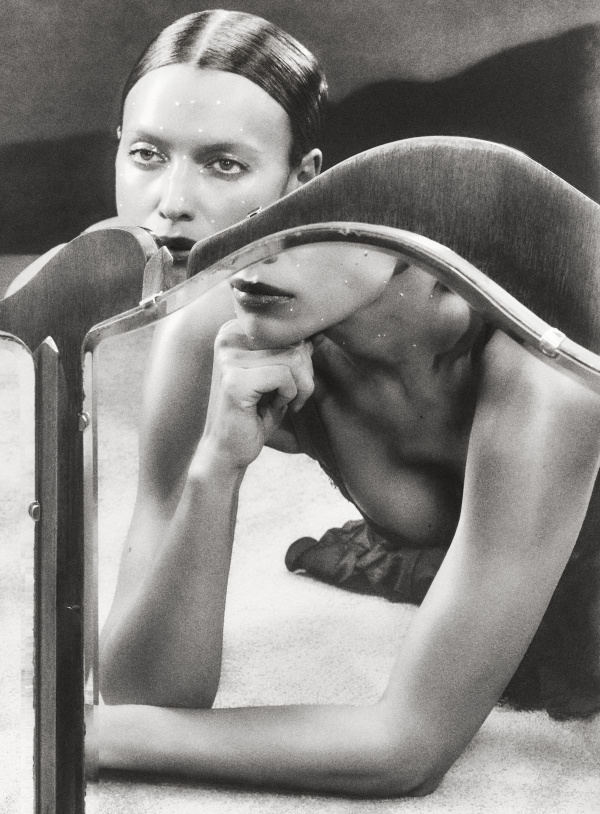
Elizaveta was regularly exposed to the theater, opera, and museums growing up. “Going to the theater in Moscow in the ’90s was very common. My mother showed me, in a very casual, nonchalant way, that art was a way to express oneself. She made me feel like it was accessible,” she says. Above: Model Irina Shayk for Vogue Spain, February 2023
Elizaveta’s childhood was defined by the last gasps of Soviet culture and the opening floodgates to Western influence. “It was the ’90s in Russia—a tumultuous time politically, socially, and culturally. Life in Moscow was influenced by this wild uproar. It was like, ‘Oh my God, we have freedom? We can say whatever we want?’” It was however, as she calls it, “an illusion,” and her family fled to Germany when she was just 12 seeking refuge from political tensions as a Russian-Jewish family. “We fled Russia for political reasons.” She leaves it at that.
- Model Nyaueth Riam for the Gentle Monster JELLY campaign. Today Elizaveta’s work is ubiquitous across the covers of fashion mag- azines, ad campaigns, and museum walls. Raised with a deep appreciation for the arts, early experiences with art would come to shape the core of her identity as an artist.
- Zendaya for Vogue Italy, July 2022
For a child, though, the complexities of such a move were hard to grasp. “I was just trying to learn German, go to school, and make friends, which I didn’t find very easy.” The isolation of being uprooted at such a formative age was a driving force behind Elizaveta’s early creative impulses. “That’s when I began drawing and painting,” she says, reflecting on how art became her escape during those difficult years. “It was more intuitive and automatic. If I had to psychoanalyze it now, I was likely reflecting on my identity as a young girl. My work often featured self-portraits or images of women and animals, all in vibrant colors—pretty much what you see in my pictures still.”
- Elizaveta’s “Pelle di Luna” series featuring model Sofia Steinberg for the Public Editions NOSTALGIA Issue 07, March 2024. Through- out her portfolio Elizaveta seamlessly trans- lates abstract ideas into compelling, tangible images. “I always strive for a particular state of mind or mood in each image,” she says.
- One of Elizaveta’s recent projects included a campaign shoot for the fashion brand KNWLS featuring actress Julia Fox. “Julia is an amazing muse and actress. I love working with actors because they bring a unique energy to the shoot.”
Despite her growing interest in art, when Elizaveta graduated from high school in Germany, she didn’t initially pursue a creative career. Instead she studied psychology. “After finishing school at 18, I wasn’t sure what I wanted to do. While I was painting and illustrating I didn’t have the backbone to actually stand up for myself and commit to being an artist,” she says. Her uncertainty pushed her toward a more practical path, though her artistic inclinations never left her.
“After five years I graduated and became a clinical psychologist while simultaneously pursuing photography.” The balance between these two worlds was hard to maintain. “By 2013 I realized I couldn’t fully focus on becoming a great therapist because I was also pursuing photography. A pivotal moment came when a supervisor told her, “You keep going back to the gas station to pump gas, and all you get is dirt and grime. How many more times do you want to go back to that station?”
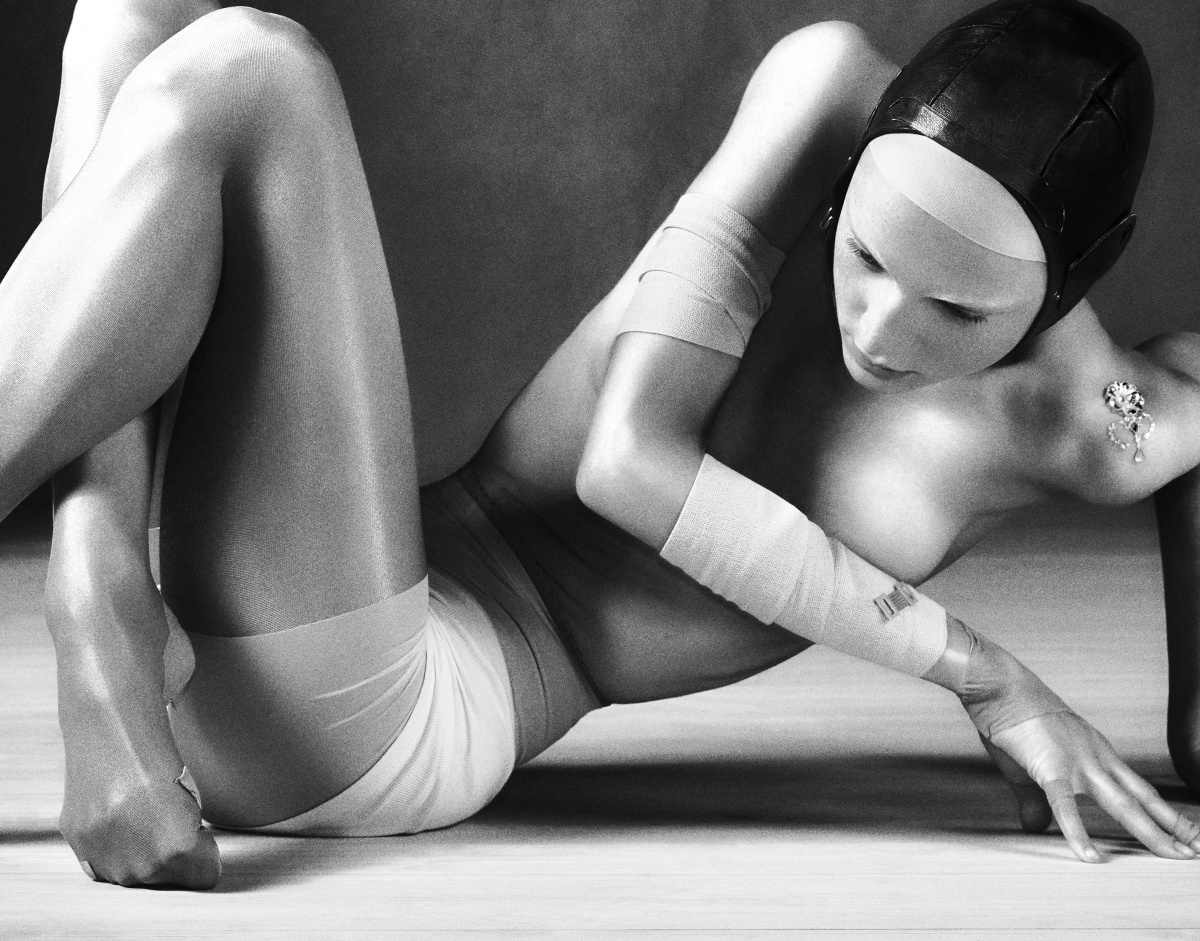
Elizaveta’s perfectionism extends beyond planning to the very execution of each shoot. “If there’s something I hate during production, it’s inefficiency and wasted time,” she admits. 2022. Above: Model Michelle Laff for a personal project.
That advice forced Elizaveta to reckon with her fears and doubts. “When you want to do something risky and invest in yourself, you have to be delusionally optimistic,” she says. “I didn’t have a soft pillow to fall back on—no trust fund, nothing. It felt like a full-on risk and the decision didn’t come to me at a single moment; it was more of a long, torturous process with many weekends spent contemplating my path,” she says. Her mother had tried to convince her to be like Anton Chekov, the great Russian writer who worked a day job and wrote on the weekends. But that wasn’t for her. “I didn’t want to follow the Anton Chekhov path, but I did find it difficult to give up seven years of psychology.”
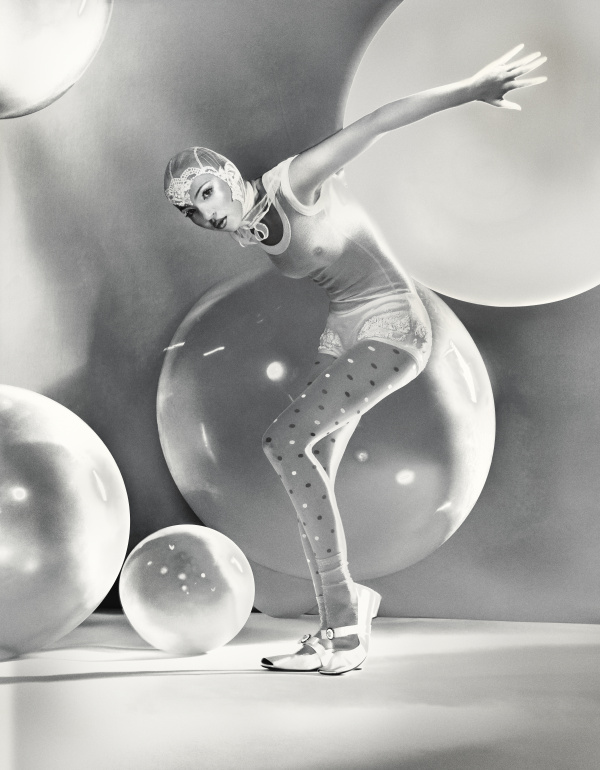
Model Lila Moss for Vogue Spain, February 2024
Today Elizaveta has fully embraced the world of photography, a medium that allows her to blend her emotional insights from psychology with her surrealist, painterly approach to visuals. Her work is instantly recognizable—characterized by vibrant colors, dramatic lighting, and an ethereal quality that pulls viewers into another world. “The core work that I truly value has always revolved around transformation and the different layers of human personality. It’s about emotion, isolation, and the loose connections between soul, body, and mind,” she says.

Despite how Elizaveta’s images might appear, most of her work happens on set and in camera, not in a software filter. “All of the colors happen in pre-production. There’s not as much post-production as people assume.” Above: Model Lulu Wood for Carcy magazine, F/W 2023.
Her current process is as meticulous as it is experimental. “In terms of process I’m very experimental and a perfectionist. Sometimes I plan a story for a month or even longer,” she says. Her planning phase is crucial. Every detail, from the costumes and makeup to the set design and lighting, is carefully considered long before she steps into the studio. “The further I go as an artist, the lengthier the process becomes because I’ve tried a lot of things. I manifest and imagine a 3D print before I go into the studio.”
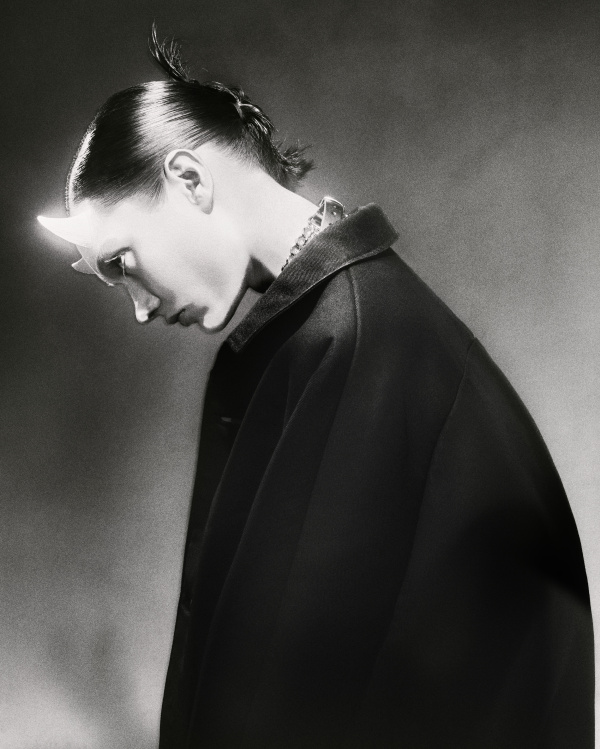
Model Sofia Steinberg for a personal project
Her perfectionism extends beyond planning to the very execution of each shoot. “If there’s something I hate during production, it’s inefficiency and wasted time,” she admits. “The ‘let’s just try it and see what happens’ mindset is the antithesis to my work. I want to be experimental, but I can only do that if I’ve already built an environment I can vouch for.” It’s this careful balance between structure and flexibility that defines her approach. “It has to be both reliable and stand very firmly, but also has to be very flexible and quickly changeable.”
- Elizaveta’s process allows her work to be at once deeply collaborative and highly per- sonal. She works closely with art directors and clients but maintains a firm grip on her creative vision. Above: Model Lulu Wood for Carcy magazine, F/W 2023.
- Model Lindsey Wixson for Zara South’s July 2022 ad campaign
One of her recent projects, a campaign shoot for the fashion brand KNWLS featuring actress Julia Fox, exemplifies this balance. “Julia is an amazing muse and actress from New York. I love working with talented individuals, especially actors, because they bring a unique energy to the shoot,” she says. The shoot required a high level of preparation, as Julia’s limited availability meant Elizaveta had to maximize every minute on set. “We built the environment using polished steel and aluminum foils, incorporating various objects, including cigarettes,” she says. The goal was to create a look reminiscent of a sun-faded poster, a vision achieved through a combination of the blonde wig Julia wore and the stark, muted tones of the set. “The only element that stood out was the rich cocoa leather of her jacket and the graphic elements of her makeup.”
- “My portfolio has always been distinctly my own, which kept a lot of clients out who might have wanted to manipulate my style,” Elizaveta says. Model Michelle Laff for Image magazine Issue 2, January 2024
- Model Maaike Klaasen for d la Repubblica, April 2022.
Part of what make’s Elizaveta’s work so successful is her ability to translate abstract ideas into compelling, tangible images. Each project begins with a deep conceptual understanding of the mood she wants to convey. “I always strive for a particular state of mind or mood in each image,” she says, explaining how creating a collaborative feeling on her set is imperative to setting the mood—everyone on the crew is encouraged to participate and assist in the creative preparation so that when the talent enters the set, everyone begins to feel a bit of “magic.” When that happens Elizaveta says you can feel it in the room. “Everyone starts losing the feeling of their assumed roles, and everyone can grasp the goodness and the fullness of the room.”
To the frustration of many aspiring photographers looking to emulate her style, despite how Elizaveta’s images might appear, most of her work happens on set and in camera, not in a software filter. “All of the colors happen in pre-production. There’s not as much post-production as people assume.” Her skillful human-centric approach, perhaps driven by her previous psychology experience, is likely the true key to achieving her signature style.
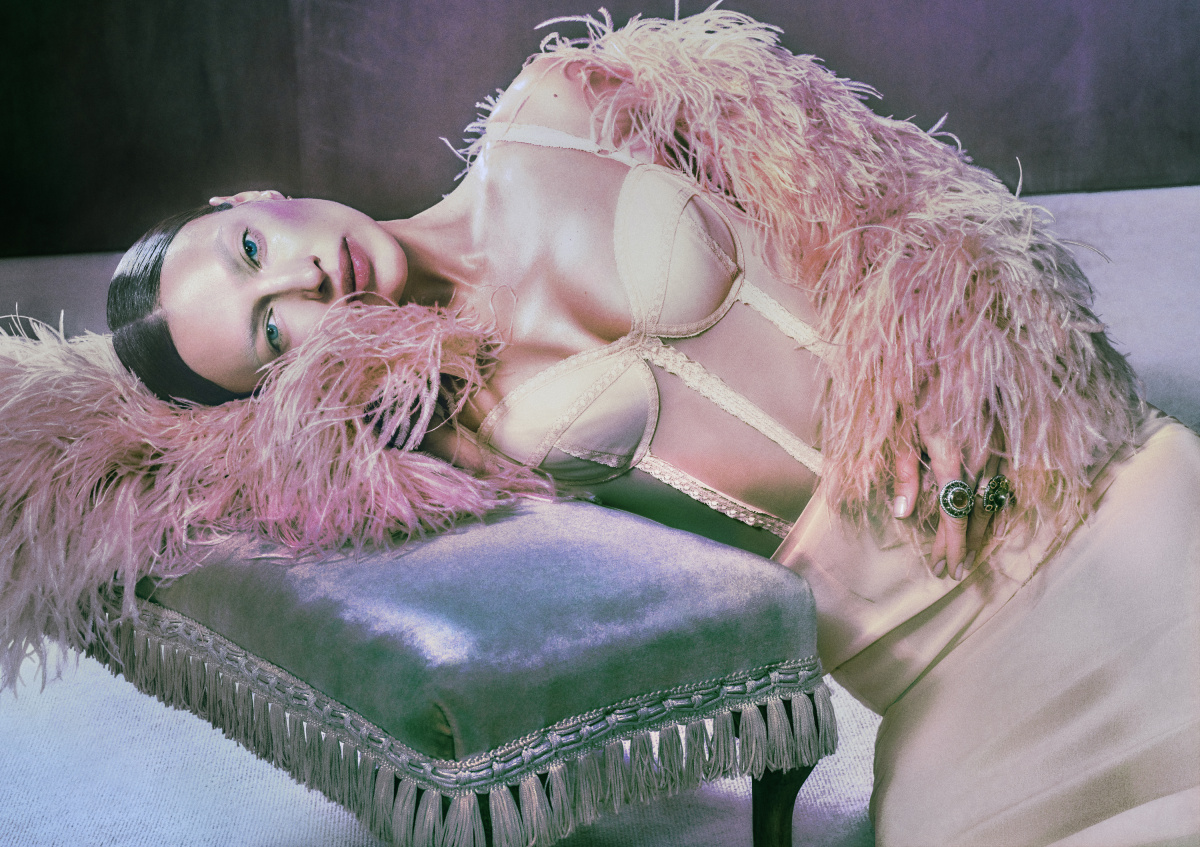
“Some shoots go exceptionally well where you fly on this cloud of endorphins, and everything is perfect. You just want to hug everyone.” Above: Model Irina Shayk for Vogue Spain, February 2023.
Elizaveta’s process allows her work to be at once deeply collaborative and highly personal. She works closely with art directors and clients but maintains a firm grip on her creative vision. “My portfolio has always been distinctly my own, which kept a lot of clients out who might have wanted to manipulate my style. If clients interfere during the process, standing in front of me searching for the right picture, I have to interfere back and ask them to leave,” she says with a laugh. Still, she values the input of those who understand and appreciate her vision. “There are tons of clients who are involved in the best way possible—they’re talented and insightful people with valuable input.”

A self portrait by Elizaveta.
Like all creative processes, it’s not entirely foolproof, especially when working with some of the world’s most famous celebrities and models. “Some shoots go exceptionally well where you fly on this cloud of endorphins, and everything is perfect. You just want to hug everyone—and that can actually be very bad. You might be so enamored with the person you overlook the fact that you still need to capture the image. On the other hand, there are shoots where you feel like you’re walking through mud; it’s hard work. These feelings can lead me to think I’ve done a bad job. Both of these cases can be treacherous,” she says.
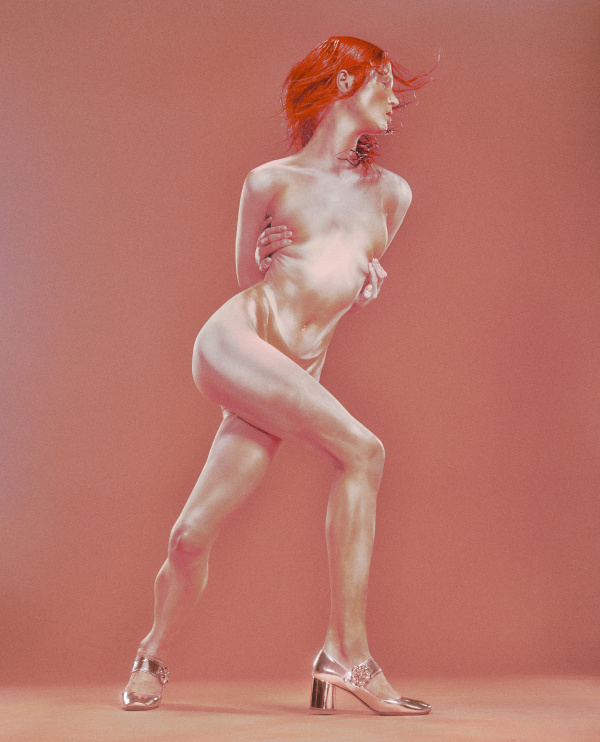
Model Michelle Laff for Image magazine Issue 2, January 2024
Over the years of producing these elaborate shoots, Elizaveta has discovered that an important process is editing is time and distance. “I try not to assess the work immediately after the shoot. Instead I focus on collecting images throughout the day. My philosophy is not to say, “Yes, I have it,” but rather to go and thoughtfully execute many things. Then I go home and review them analytically to decide whether or not the magic happened.”
Not every important part of Elizaveta’s practice has always been carefully planned. In 2013 she met perhaps her most important collaborator, the lighting director Jospeh Beyer, who sent her a message on Behance and asked if he could assist her on an upcoming shoot. She said yes. “Since that moment we’ve been on every set together. I don’t think there’s a single shoot you can find online since 2013 that he hasn’t been a part of.” The couple later married. “We do everything together, we consult on every step of the way. On a shoot he does everything technical about the lighting. He is an absolute partner.”

A version of this article originally appeared in Sixtysix Issue 13.
